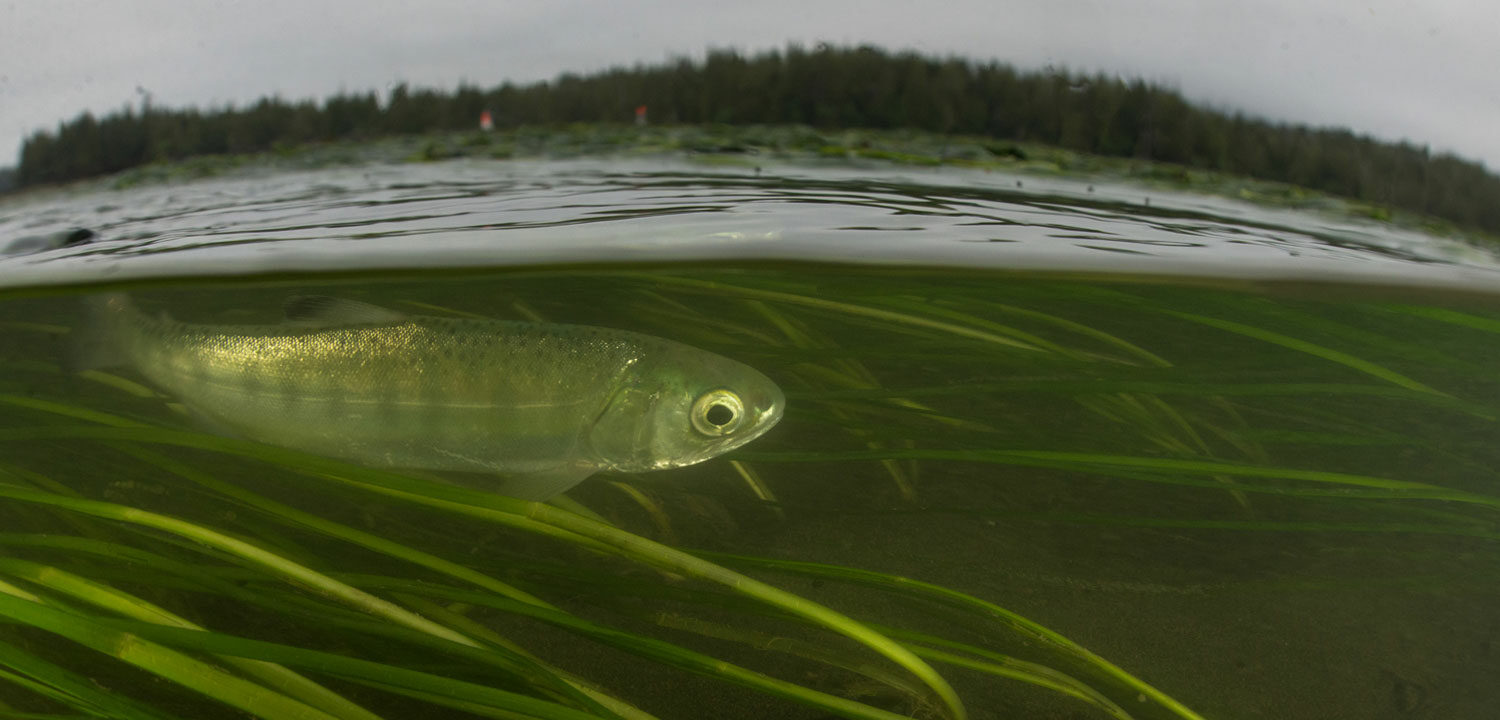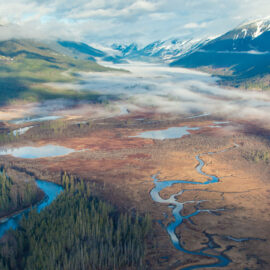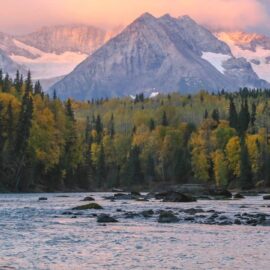Russian delegation visits northern BC, says estuary is “worst location” for gas facility.
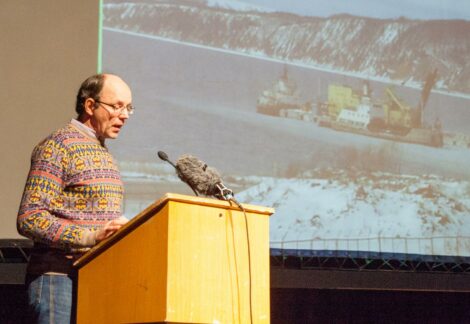
A visiting delegation of Russian conservationists and scientists warned that a new gas facility planned for the Skeena River estuary in British Columbia could collapse salmon runs there.
The Russian delegation, including Dmitry Lisitsyn, a longtime Wild Salmon Center collaborator, Goldman Prize winner and chairman of Sakhalin Environment Watch in the Russian Far East. They visited Lelu Island, the planned project site, on a week-long tour of the Skeena basin. “It’s absolutely clear that Lelu Island is the worst location for such a facility,” Lisitsyn told the Canadian press last week in British Columbia.
A nursery under threat
Lelu Island is fronted by Flora Bank, a 1,000-acre eelgrass bed that is the most popular juvenile habitat in the Skeena ̶ visited by at least 40 different populations of juvenile salmon and steelhead every spring. Petronas, the Malaysian state oil and gas conglomerate, has proposed the $12 billion Pacific Northwest LNG gas cooling and export facility on the undeveloped island, with a Golden Gate bridge-sized causeway planned over Flora Bank to access a new deepwater port.
Lisitsyn and his colleagues bring a wealth of experience on liquefied natural gas facilities, having worked to mitigate impacts from heavy oil and gas development on Sakhalin Island.
Their tour coincided with a draft report on the Lelu Island project from Canada’s environmental assessment agency – a report that has drawn criticism from northern BC groups and Canadian scientists for dismissing and understating the impacts the project could have on salmon in the Skeena estuary.
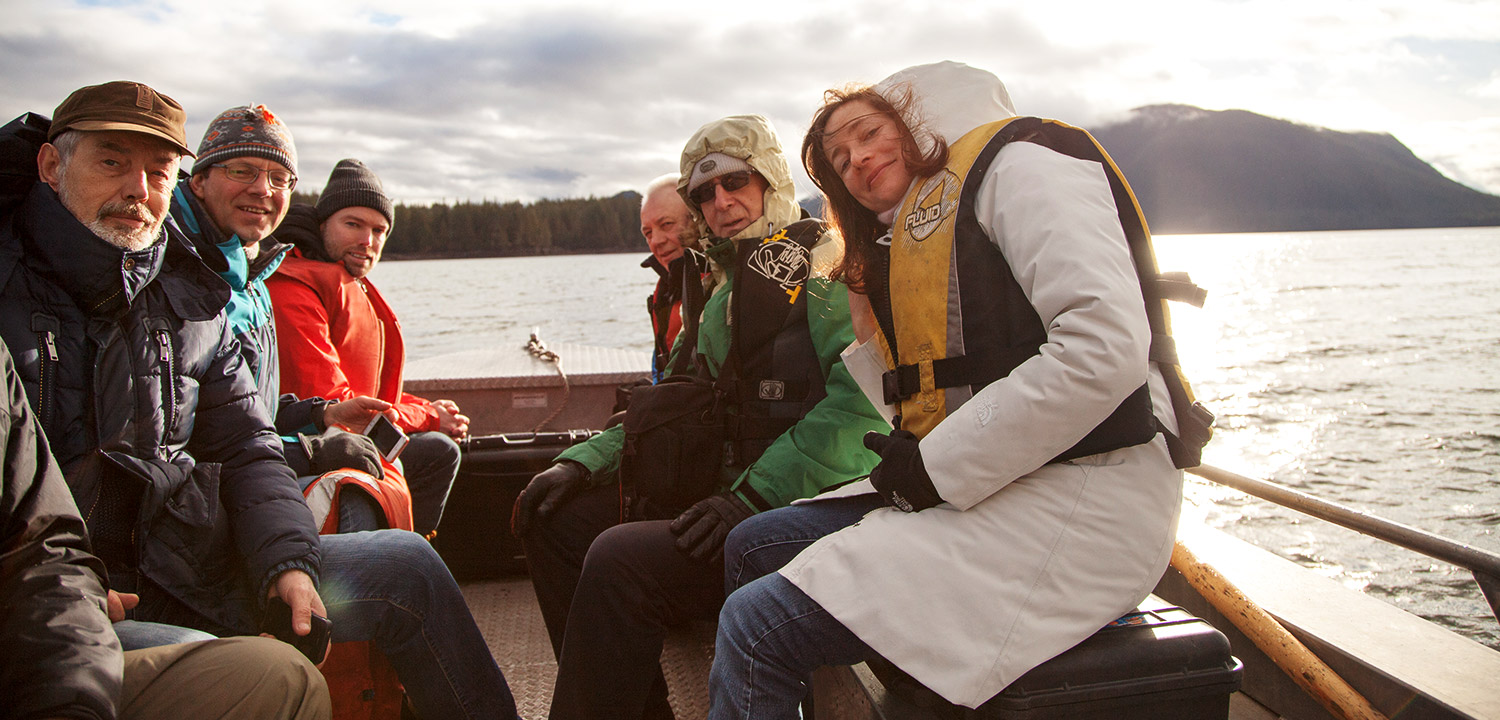
Avoiding repeating history
The Russian delegation came to Canada at the invitation of a number of northern First Nations and community groups in the Skeena Region, and their trip was organized by Wild Salmon Center. After visiting the project site, the group shared their experiences with communities, town councils, and watershed groups.
“Sakhalin Island and Lelu Island have two things in common – wild salmon and LNG. My Canadian colleagues invited me, along with three Russian scientists, to share our experience of the environmental impacts of the Sakhalin II LNG project, which has been in operation for 10 years on the opposite side of the Pacific Ocean,” said Lisitsyn. “We have a chance to help the people of the Skeena watershed protect one of the most famous and rich wild salmon sanctuaries in the world. With the dramatic decline of our wild salmon, I really hope this will not be replicated in the Skeena estuary.”
Dr. Aleksandr Shubin, a salmon ecologist with the Sakhalin Research Institute of Fisheries and Oceanography, saw huge potential impacts to salmon for the BC project. Pink salmon runs in Sakhalin’s Aniva Bay, once the third largest in the world, collapsed after an LNG facility was built by Shell and opened in 2009. “The LNG facility proposed for Lelu Island on the Skeena estuary will have serious impacts on salmon,” Shubin said. “The Sakhalin LNG site is over 30 kilometers [19 miles] away from the closest major salmon spawning river, while the Pacific Northwest LNG site would be located right on top of the most critical salmon habitat in the Skeena estuary. The impacts on salmon in the Skeena would be catastrophic.”
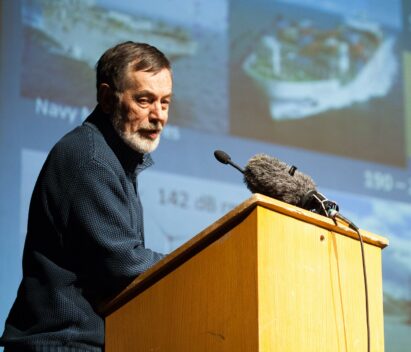
In particular, the Russian delegation warned about juvenile salmon being scared away by the low frequency noise of 350 tankers scheduled to visit the LNG export facility off Lelu Island every year. Dr. Alexander Vedenev, Head of the Ocean Noise Laboratory, Shirshov Institute of Oceanology, Russian Academy of Sciences said, “The noise from the tankers and operation of the LNG facility will affect salmon behavior up to three kilometers away. Juvenile salmon will likely avoid this critical habitat.” During the three years of construction, Vedenev said, pile driving, underwater blasting and dredging will also kill fish close to these activities, and cause changes in behavior and avoidance of Flora Bank.
The delegation also suggested that construction would destabilize Flora Bank. Dr. Victor Afanasiev, Head of Coastal Geosystem Lab, Institute of Marine Geology & Geophysics, Russian Academy of Science believes that, “The construction of the tanker loading jetty, suspension bridge, and loading dock could destabilize Flora Bank. The pilings, bridge abutments, and pipeline will totally alter the currents and cause erosion, which could collapse Flora Bank.”
While the Canadian environmental assessment agency acknowledged many of these impacts in its draft report, it concluded that the project developers could mitigate them. The Russian delegation disagreed. “Salmon will be negatively affected at both the construction and operation stages,” Dr. Vedenev said.
